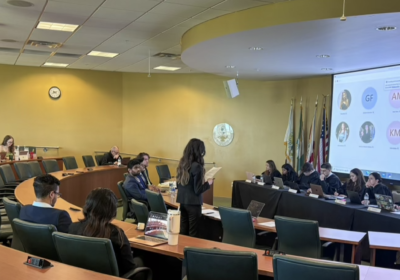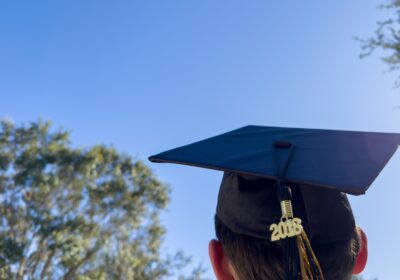Its a great, big gamble
Poor economic conditions have contributed to higher student debts across the country – looming burdens that are causing students to take a “great, big gamble” when determining how to pay them, USF economics professor Antoinette Criss said.
“The idea that (students) are gambling on is that they are going to be in school long enough for us to start coming back out (of the recession),” Criss said, “so that when they are done, there are jobs available.”
But every gamble comes with a price. According to USF Director of Financial Aid Billie Jo Hamilton, the average USF student accrues $21,679 in student loans from the time they are a freshman to the time they graduate, and the default rate is only 5 percent. She said these statistics are “pretty much right on target” with the national average, which is steadily increasing.
According to the St. Petersburg Times, members of Florida’s Higher Education budget subcommittee said earlier this month that they may increase the base tuition for state universities to help offset proposed budget cuts, which could mean increases in loans for students.
“The idea that getting an education is going to get me ‘x’ kind of job and pay me for ‘x’ number of years is a guarantee that none of us have, no matter what we think we are doing,” Criss said. “That’s not the way the world works, not in the private sector or in the public sector.”
Though an investment in secondary education provides students with valuable skills in a declining job market, more and more students are making poor fiscal decisions while enrolled in school that contribute to their debts, Hamilton said.
“My experience is that students understand debt and understand that they are borrowing money, but there are some behaviors that cause students to borrow too much,” she said, “such as taking classes they don’t need and dropping out of classes.”
One of the biggest contributors to growing student debt is the time it takes students to complete their degree, she said. The longer students are enrolled in school, the higher their student debt will be, whether from taking out full loans while only attending school part time or by missing out on much-needed wages.
“Every year a student stays in school it costs them $60,000 in lost wages and cost of attendance,” Hamilton said. “We would encourage students to take a full course load every semester, complete them all and get out of here as soon as possible.”
Hamilton said students typically take out loans that are equal to the amount of money they would make in a year if they land their desired position right out of college. Though this situation could pose problems in and of itself, many students are entering lower-paying jobs upon graduation because of the economic downturn, burying them deeper in debt.
According to the Bureau of Labor Statistics, the unemployment rate in Florida was about 3.3 percent in March 2006 and about 11.9 percent as of January 2011, placing the state among the worst job markets in the nation. As of February 2011, the national unemployment rate had gone down from 9.6 percent in 2010 to 8.9 percent.
“I don’t worry about the student who borrowed $20,000 and gets a degree,” Hamilton said. “I worry about the student who borrows $45,000 and gets a low-paying job or never gets a degree for whatever reason.”
Criss said a big challenge that student loans present is that they are loans that cannot be bankrupted on, such as a mortgage or car loan, and must be repaid in full.
Students who graduate and cannot find a job can file for deferment on the loan, making payments as the money comes in, Hamilton said. Those who do find a job but cannot make the full payments can set up an income contingent repayment plan, where the payment amounts are based on the student’s income.
Students seeking advice on what to do to pay off their loans can receive information on their options from the financial aid office on campus. To help educate future students on how to manage their money more effectively, Hamilton said the University has begun requiring incoming students to take specific courses.
“The last two freshmen classes had to go through an online financial literacy course before they start here,” Hamilton said. “It’s an attempt to start getting students to think about money. The main thing is to teach students to only borrow what you need to.”
She said the course covers setting up accounts, credit card debt, budgeting tools and making better financial decisions – not about everything that you may be eligible for.
“I think the best advice I can give students is borrow the least amount you need, make sure you’re following your academic plan, going full time and completing all your classes,” Hamilton said. “Combining responsible borrowing and money management with good academic decisions will get (students) out of here on time and with the least amount of debt.”






